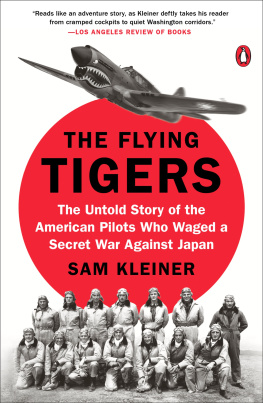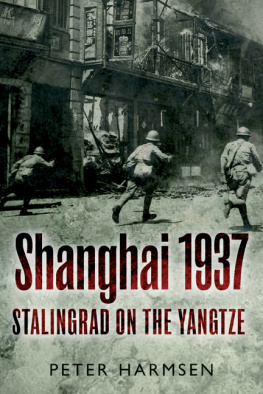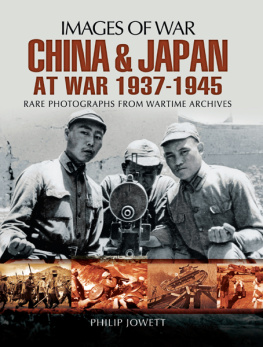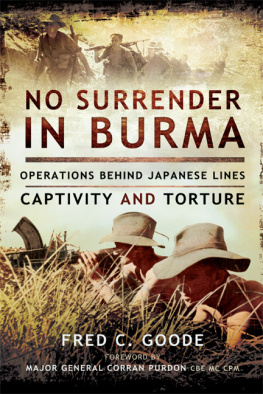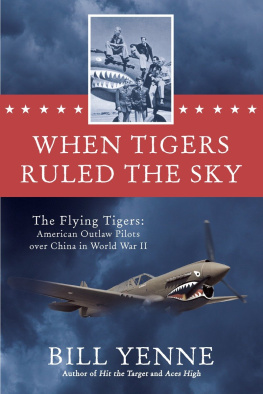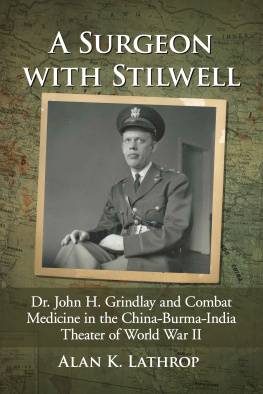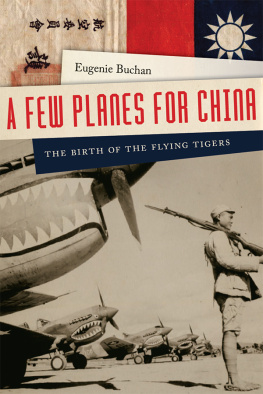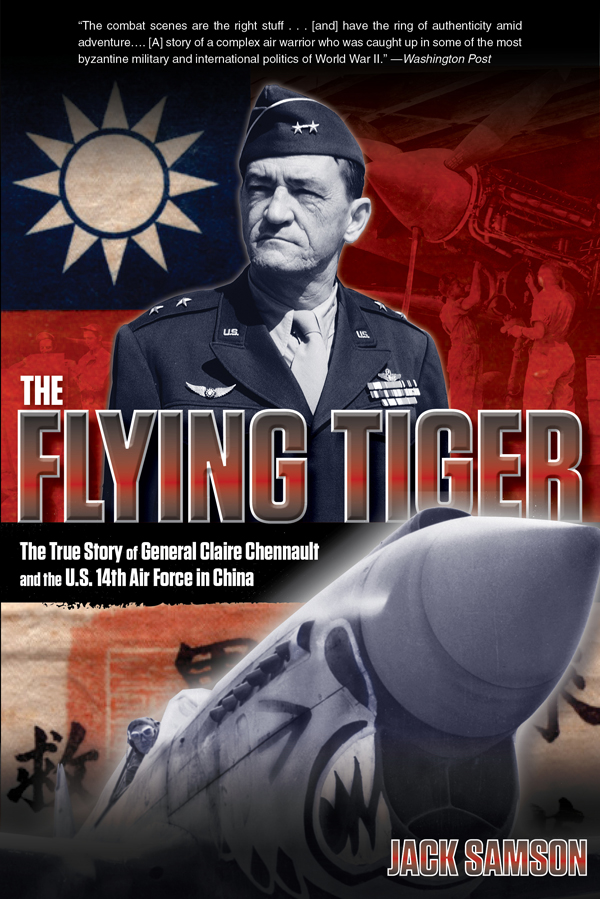T HE F LYING T IGER
T HE F LYING T IGER
The True Story of General Claire Chennault and the U.S. 14th Air Force in China
J ACK S AMSON
LYONS PRESS
Guilford, Connecticut
An imprint of Globe Pequot Press
Copyright 1987, 2005, 2012 by Jack Samson
First Lyons Press paperback edition, 2005
ALL RIGHTS RESERVED. No part of this book may be reproduced or transmitted in any form by any means, electronic or mechanical, including photocopying and recording, or by any information storage and retrieval system, except as may be expressly permitted in writing from the publisher. Requests for permission should be addressed to Globe Pequot Press, Attn: Rights and Permissions Department, P.O. Box 480, Guilford CT 06437.
Lyons Press is an imprint of Globe Pequot Press.
Library of Congress Cataloging-in-Publication Data
Samson, Jack.
The flying tiger : the true story of General Claire Chennault and the U.S. 14th Air Force in China / by Jack Samson.
p. cm.
Originally published: New York : Doubleday, 1987.
E-ISBN 978-0-7627-9542-0
1. Chennault, Claire Lee, 1893-1958. 2. GeneralsUnited States--Biography. 3. China. Kung Chn. American Volunteer GroupBiography. 4. United States. Army Air Forces. China Air Task ForceBiography. 5. United States. Army Air Forces. Air Force, 14thBiography. 6. World War, 1939-1945CampaignsChina. 7. World War, 1939-1945Aerial operations, American. I. Samson, Jack. Chennault. II. Title. III. Title: True story of General Claire Chennault and the U.S. 14th Air Force in China.
E745.C35S26 2011
358.4'1332092dc23
[B]
2011019218
To the memory of those young men whose dreams came to an end in China, Burma, and India.
A CKNOWLEDGMENTS
From ChinaThe Remembered Life by Paul Frillman and Graham Peck. Copyright 1968 by Paul Frillman and Graham Peck. Reprinted by permission of Houghton Mifflin Company.
From Way of a Tiger by Claire L. Chennault, edited by Robert B. Hotz. Copyright 1949 by Claire L. Chennault. Reprinted by permission of Anna Chennault.
T ABLE OF C ONTENTS
F OREWORD
As always, on those rare occasions when I have been asked to write a Foreword for a book, particularly a book concerning the life of a man whom I had a great interest in and great respect for, I approach the problem with somewhat a degree of temerity.
I never had the pleasure of knowing General Chennault personally, although I served in the China-Burma-India Theater and although in my job in the early part of World War II of training young cadets to shoot their weapons at aerial targets and ground targets, I grew to realize that this was the one man in our whole aviation effort who had dedicated any really large degree of interest in the subject of hitting a target by bullets fired from one aircraft at an enemy trying to get away. He had developed what later became known as the curve of pursuit [the continually changing angle of deflection a fighter pilot must keep in mind when firing at a moving enemy plane], and although his teachings were not as detailed as we were ultimately able to provide after consultation with the Royal Air Force, he was able to impart enough of this knowledge to the Air Force that he commanded in China to allow them to shoot down many Japanese aircraft. He was, as this fine book will tell you, commander of the Fourteenth Air Force in China, and later he retired in 1945 as a major general and as president of a large airline in China.
At the outbreak of the war following the Japanese attack on Pearl Harbor in 1941, the Asian Theaters elite fighter squadrons, organized and commanded by Claire Chennault, became known as the Flying Tigers. Their missions were grimly simple: to impede the Japanese advance over the vast area of China and Burma while the global war against the Axis was fought and won elsewhere. But for these men, the real war was right overheadtheir American P-40s against the Oscars and Zeros of Japan. They were desperately short of munitions and material and almost constantly short of gasoline and even short of aircraft. But these men continued to fly from very crude front-line airfields over practically unmapped territories, where a parachute jump from a stricken plane would probably end in death.
The general was a flying product of World War I, having received his wings in 1918, then having flown in the Mexican Border Patrol, later with the Hawaiian Pursuit Squadron, was an instructor at Brooks Field, and a member of the United States Army Pursuit Development Board. After retiring from the Air Corps and going to China as an advisor to the Chinese Air Force in 1937, his was the professional background one is going to sense throughout this book, the background of a man newly embarked upon a new aerial mission of armed forces without anybody at that time really having a great knowledge of how to go about it.
I would go back to my first words of this Foreword and point out that it was his fundamental grasp of the theory of the curve of pursuit that, in my opinion, enabled him to achieve the successes that he achieved in China, that, plus a driving determination to properly equip his men, feed his men, and take care of them. These latter facts I knew, because I flew a few missions myself of supplies to his bases, and I could tell immediately the great respect that the men had for this commander, a respect that grew in me.
Claire Lee Chennault was a fascinating man in a fascinating time in history. This book will go a long way toward ensuring him his deserved place in that history.
Barry Goldwater
United States Senate
P REFACE
I first encountered the highly controversial Claire Lee Chennault whenas a young second lieutenant navigator/bombardier in the 425th Bomb Squadron of the 308th Bomb Group in Kunming, China, in 1944I suddenly realized the pitcher on our softball team was the famed head of the Flying Tigers himself. Several of my squadron matessupposedly in the knowsaid he was part Cherokee Indian. I bought that story at the time because he certainly looked like an Indian chief. Wearing a baseball cap and dressed in a sweat shirt and suntan pants, he didnt look a bit like a two-star general, nor did he act like one.
It was not until I returned to the Far East in 1950 to work as a public relations director for Chennaults civilian airline, Civil Air Transport (CAT), that I got to know the Old Man personally. I loved to hunt and fish and so did Chennault. It was only natural that the two of us ended up hunting pheasants and ducks together on the south tip of Taiwan in the 1950s. He was a warm and generous man who never forgot any of his boysas he called those men who had served with him in the American Volunteer Group (AVG), the China Air Task Force (CATF), or the U.S. Fourteenth Air Force in China.
He was a simple, straightforward man andif there is such a thinga pure patriot. He never had any doubt about his role in life. It was to serve his United States as a military man against her enemies. He fought the Japanese with a curious intensity, and when they were defeated, he turned his attention toward the Chinese Communists. While he must have known Generalissimo Chiang Kai-shek had faults as a ruler of China, he never abandoned the Nationalist regime on the mainland, and he continued to support it on Taiwan as long as he lived. He had considered Chiang a friend and his military commander since the days when they fought together against overwhelming odds in 1937. Loyalty, to Chennault, was not just a word. It was a way of life.


